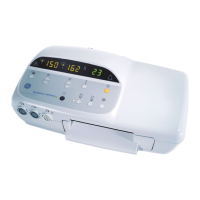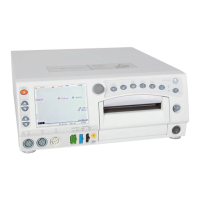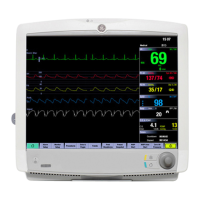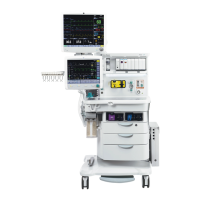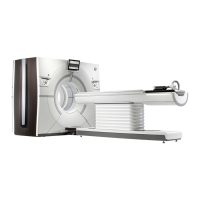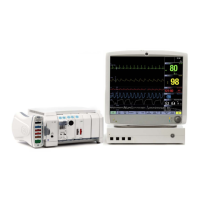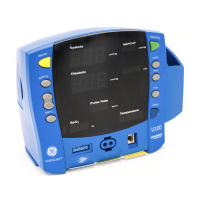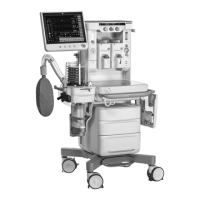Revision B 120 Series Maternal/Fetal Monitor 11-15
2015590-001
Peripheral Devices: Model 115-Compatible Communications Protocols
Cabling Information
Monitor RS-232 Connector
The 120 Series Monitor’s RS-232C Ports each use a 6-pin RJ-11C connector, shown
in Figure 11-4.
The following control signals are supported:
Request to Send (RTS)
This output line is asserted (+12 V) whenever the 120 Series Monitor is on and
operating; it can be used to determine whether the monitor is powered on.
NOTE: This signal is supported by connectors J109 and J111 only. This signal is
not supported by connector J110.
Transmit Data (TXD)
This output line provides the serial data sent to the external computer from the 120
Series Monitor.
Clear to Send (CTS)
This input line must be asserted in order to enable the transmission of data from the
120 Series Monitor. Under conditions where no modem is used, the line can be tied
to the RTS line of the monitor. If a modem is used, this line should be tied to the
CTS line of the modem.
NOTE: This signal is supported by connectors J109 and J111 only. This signal is
not supported by connector J110.
Receive Data (RXD)
This input line provides the serial data sent from the external computer to the 120
Series Monitor.
Standard RS-232C Rules
The following rules must be observed:
When a direct connection is made between a 120 Series Monitor and another
Data Terminal Equipment (DTE), a standard null-modem cable must be used.
When an indirect connection is made, using a modem, a 120 Series Monitor
requires a normal-modem cable.
Cable Distance
The RS-232C Interface supplied with the 120 Series Monitor is capable of operating
over varying distances depending upon the data rate used and whether the cabling is
shielded or unshielded. Refer to the manufacturer’s specifications.
Data Terminal Equipment Cabling
When the 120 Series Monitor is directly connected to another Data Terminal
Equipment (DTE) device, a standard null-modem cable is required as shown in
Figure 11-5.
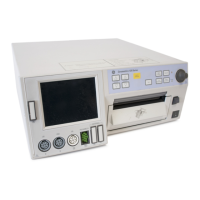
